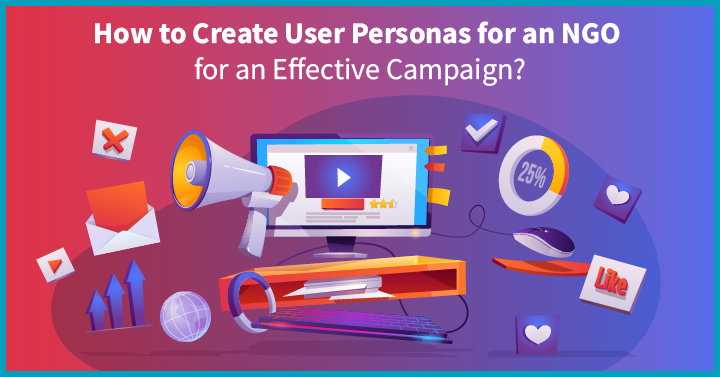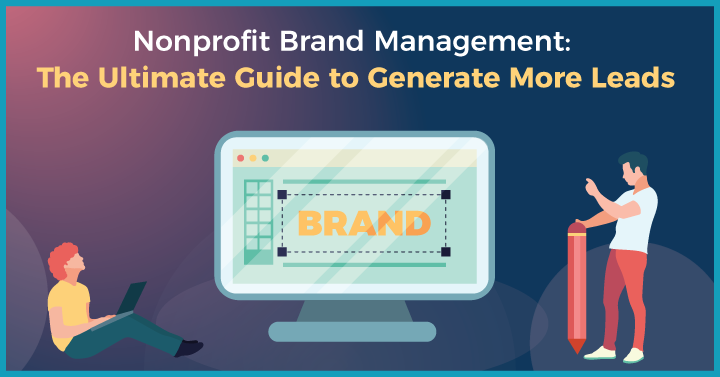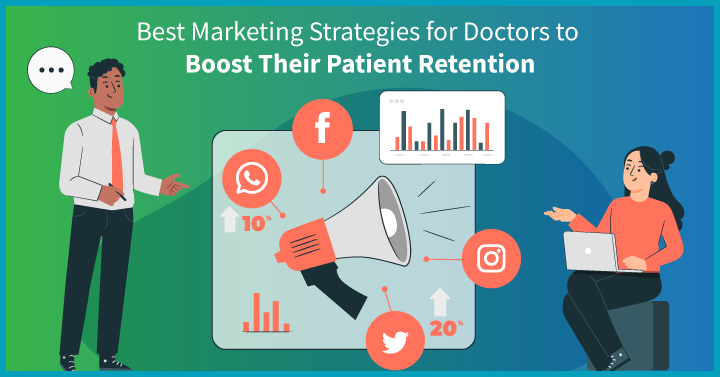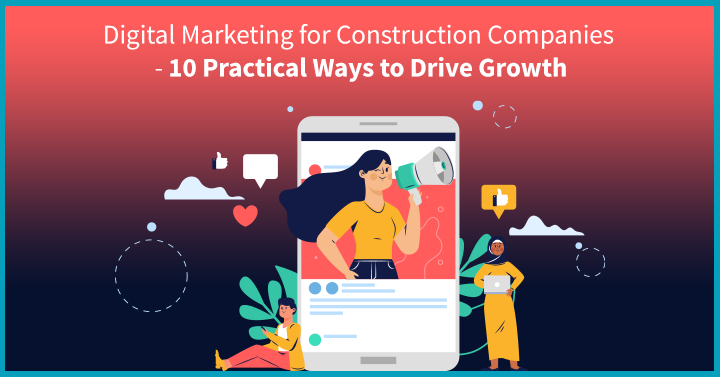Are you failing to increase relevant traffic to your website?
Do you struggle to create personalised content for your target audience?
Are you striving to achieve ROI from your content marketing efforts?
According to SEMrush’s Report, “39% of marketers find it challenging to generate enough traffic, while 30% face difficulty generating ROI through their content.
The statistics suggest that the majority of businesses witness setbacks in attaining desired results through their content marketing strategy.
Unfortunately, many companies still rely on guesswork and assumptions instead of analysing data during content creation and distribution. As a result, this ineffective content strategy fails to boost the overall marketing initiatives and leads to budget overruns.
The key to creating compelling content that engages your target audience and drives conversions lies in a deep understanding of your audience’s demographics, buying patterns, interests, and more. Integrating these data-based insights into your content allows you to make informed decisions, deliver better customer experience, and boost ROI.
This blog will highlight the basics of data-driven content marketing strategy and some prominent advantages it offers to businesses.
2. What is Data-Driven Content Marketing Strategy and Its Benefits?
In order to formulate an effective and efficient content strategy, it is imperative to have a clear understanding of the concept of content marketing. Thus, our first step shall involve exploring the definition of content marketing, followed by the benefits it offers to businesses:
2.1 Definition of Data-Driven Content Marketing Strategy
A data-driven content marketing strategy is a systematic approach to creating and distributing content that resonates with your target audience. It includes leveraging internal and third-party data sources, such as social media analytics, search engine data, and industry research, to gain insights into your consumer’s behaviour, interests, and preferences.
Accordingly, you can create personalised and engaging content that drives meaningful results. Moreover, a data-driven content marketing strategy goes beyond content creation. It also involves using relevant information and content marketing KPIs to measure the performance of the campaigns. Hence, this approach enables businesses to identify areas of improvement, make data-backed decisions, optimise content marketing efforts, and achieve business goals more effectively.
2.2 Benefits of Data-Driven Content Marketing Strategy
According to Forbes, “64% of executives “strongly agree” that data-driven marketing is crucial for success in a competitive global economy.”
This highlights the significance of using data for informed decision-making and developing marketing strategies that provide a competitive edge. So, let’s explore the key benefits of implementing a data-led content marketing strategy:
- Focuses on audience-centric content:
By using data analytics, businesses can gain insights into the various aspects of the target audience, including demographics, buying patterns, pain points, interests, behaviours, and preferences. This information can then be used to create content that aligns with the audience’s needs, leading to increased engagement, conversions, and retention.
- Optimises content distribution:
A data-driven content marketing strategy can help companies identify the channels and platforms that are most appropriate for reaching the target audience and distributing content. This enables marketers to strategically use their content marketing efforts and budgets on the high-impact content marketing channels most likely to drive conversions and generate a positive ROI.
- Improves your SERP rankings:
Search engine optimisation (SEO) is essential for effective content marketing. By analysing data, businesses can identify relevant keywords and topics for their target audience. Accordingly, they can create high-quality content incorporating targeted keywords that help fulfil the intent and improve the chances of ranking high on SERP. This results in boosting visibility and driving organic traffic to your website.
- Enhances brand recognition:
By creating informative and engaging content that offers valuable insights and solutions to the audience, businesses can establish themselves as an authoritative voice in the industry and build trust. Moreover, by sharing valuable content through various social and other channels, more people become familiar with the brand and its expertise, thus reinforcing brand recognition.
- Brings more leads and conversions:
“Content marketing generates three times as many leads as traditional outbound marketing and costs 62% less.” – Demand Metric.
With a data-driven content strategy, firms can target the right audience, create personalised messages, and display content at the appropriate channels for maximum visibility and reach. This tailored and strategic approach increases the number of leads and augments the conversion rate, which is crucial for a business’s long-term growth and success.
3. Critical Content and KPIs to Customer Lifecycle
The customer lifecycle refers to the various stages a customer goes through during their journey with a business, from initial awareness to becoming a loyal advocate. Here’s a breakdown of the stages and associated content marketing KPIs:
3.1 Awareness Stage
During the awareness stage, the primary objective is to introduce potential customers to your business and its offerings.
A. Content types for the awareness stage: Blog posts, Infographics, eBooks, Whitepapers
B. KPIs for the awareness stage:
- Reach – It’s the total number of individuals who have come across your content through social media shares or referrals.
- Impressions – It indicates the number of times your content has been displayed to users, regardless of whether they interacted with it or not
- Organic traffic – It measures the number of visitors who reach your website through unpaid search engine results.
- Keyword rankings – This refers to the web page’s position in search results pages for a particular keyword or query.
3.2 Engagement Stage
At this stage, consumers are interested in learning more about your products/services and want to understand why they should consider your business over competitors.
A. Content types for the engagement stage:Webinars, Podcasts, Personalised emails, Quizzes
B. KPIs for the engagement stage:
- Engagement rate – It measures how many people interacted with social media posts or campaigns versus how many people saw them.
- Time on page – It is the average time spent on the specific page by all the visitors.
- Sessions – It is a group of interactions a user has with your website or app within a specific timeframe. · Bounce rate – It refers to the percentage of visitors who leave the webpage without visiting other pages or taking any action.
- Bounce rate – It refers to the percentage of visitors who leave the webpage without visiting other pages or taking any action.
3.3 Consideration Stage
This is a crucial stage where you can highlight your unique selling points that motivate the prospects to progress toward the conversion stage.
A. Content types for the consideration stage: Case Studies, Product Descriptions, Explainer videos, Buyer’s guides
B. KPIs for the consideration stage:
- Clickthrough rate (social and email) – It represents the ratio of the number of clicks on call-to-action (CTA) buttons or links to the total number of views
- Open rate (email) – It signifies the percentage of recipients who opened an email compared to the total number of recipients.
- Page clicks – Demonstrates the number of times people clicked on crucial pages, such as the product or pricing pages.
3.4 Conversion Stage
At this stage, leads finally decide to purchase your product; however, they may have final concerns before they buy. Hence, providing clear pricing information, details about returns and refund policy, and answers to frequently asked questions is important.
A. Content types for the conversion stage: Landing Pages, Demos or free trial, Interactive Content, Product or Service Videos
B. KPIs for the conversion stage:
- Trial to Conversion Rates – It is the percentage of people who converted from a trial or free version to a paid version.
- MQL to SQL Conversion Rates – It is the percentage of marketing-qualified leads that successfully transitioned into sales-qualified leads. · Sales – It is the process of convincing leads to purchase goods and services and turn them into customers.
- Sales – It is the process of convincing leads to purchase goods and services and turn them into customers.
- ROI – ROI measures the financial return generated from your content marketing campaigns against the amount invested.
3.5 Retention Stage
The retention stage focuses on fostering customer satisfaction, engagement, and loyalty to encourage repeat purchases of your products or services.
A. Content types for the retention stage: Surveys/polls, Announcements, Personalised Emails.
B. KPIs for the retention stage:
- Customer Churn Rate – It is the number of customers who have stopped buying products or memberships after a certain period.
- Customer Lifetime Value – It estimates the total revenue a customer is expected to generate throughout their journey with your brand.
- CSAT or Customer Satisfaction Score – It measures customer satisfaction with a business or its offerings.
3.6 Advocacy Stage
The advocacy stage marks the final phase of the customer lifecycle, where buyers become enthusiastic advocates for your brand.
A. Content types for the advocacy stage: Reviews, User-Generated Content, Loyalty Programs
B. KPIs for the advocacy stage:
- Referrals – It is the number of people who your existing customers refer for consultation or demo.
- Net Promoter Score – NPS quantifies the percentage of customers who are considered promoters of your brand.
Thus, by creating relevant content and closely monitoring KPIs specific to each stage of the customer lifecycle, you can streamline your marketing efforts.
Now let’s explore the steps to create an effective strategy that strengthens your content marketing.
4. Steps to Build a Content Marketing Strategy based on KPIs
A KPI-based strategy will help steer your content marketing efforts in the right direction. Here are the essential steps to get started:
4.1 Identify Goals and Define your KPIs
According to CoSchedule, companies who set goals for their content marketing efforts are 429% more likely to report success than those who don’t.
You must first define your goals and KPIs to ensure you achieve results through your content marketing campaigns. For example, you run an edtech company and want to
acquire more leads for the newly launched data analytics course. Here is how you can set a SMART goal for your content strategy –
- Specific – Here aim is to generate leads for data analytics courses through content marketing efforts.
- Measurable – You decide to achieve ten monthly inquiries for the next six months.
- Attainable – You plan to create relevant blogs, run paid ads, and send personalised marketing emails to reach your target audience.
- Relevant – Getting more leads aligns with the overall business objective of boosting sales.
- Time-bound – Within six months.
Once you know your goals, you can specify Key Performance Indicators (KPIs) such as website traffic, keyword ranking, leads generated, clickthrough rates, etc. This will establish certain milestones to gauge performance and ensure you are in the right direction to attain your goals.
4.2 Understand your Target Audience
According to a survey by Forbes Insights, “90% of companies spend at least 25% of their advertising budgets on specific targets, and 43% of companies spend more than half of their budgets reaching specific targets”.
This emphasizes the importance of identifying and targeting specific audiences in marketing.
Understanding your target audience helps you craft tailored content for specific stages of the customer lifecycle, which increases the likelihood of reaching intended consumers. This involves conducting in-depth research to learn about their –
- Demographic information, including age, gender, education, income, etc.
- Interests such as hobbies, passion, lifestyle choices, and values.
- Geographics involves grouping people based on where they live, work, and travel.
- Behaviour describes the buyer’s purchasing reason, occasion or event, product benefits, and engagement level.
- Preferred content marketing channels include mediums such as social media or email towards which your audience is inclined.
With this information, you can create a “buyer persona” and develop tailored content for target consumers likely to be interested in your products or services. This way, by creating buyer personas, you can improve reach, increase conversions, and enhance loyalty.
4.3 Perform Competitor Analysis
Before you develop a content marketing plan, conducting thorough research on your competitors is essential. By performing a SWOT analysis, you can gain valuable insights into their products/services, marketing tactics, positioning, target channels, etc, as mentioned below.
- Strengths – This includes understanding your USPs (Unique Selling Propositions), qualities, and values that separate you from your competitors and highlighting the strengths in your content.
- Weaknesses – This involves determining the service lines or offerings your business lacks and things your competitors do better than you. It will help you improve your offerings and stay ahead.
- Opportunities – You should understand the emerging needs of your products and explore untapped market segments. You can also strategise to broaden your marketing efforts in areas where your competitors are lacking.
- Threats – In a dynamic business environment, regulations change, and new competitors emerge, so staying informed and adaptable is crucial. Moreover, it is essential to be aware of changing marketing dynamics. For example, podcasts are gaining popularity and are preferred over blogs because of the growing use of digital assistants and home AI devices.
These findings can be used to minimize the possible threats and find a gap in the market where your business can emerge as a player.
4.4 Conduct Keyword and Traffic Research
The HubSpot State of Marketing Report states that 71% of companies consider using strategic keywords as their top SEO strategy.
This approach is valid because keyword research offers valuable insights into the problems, questions, and solutions that your target audience is searching for. This way, you can tailor your content and SEO efforts to better align with their needs, increasing the chances of attracting and engaging potential customers.
Here are factors that can help you choose the right keywords:
- Search Volume – Search Volume describes the estimated number of searches for a particular period in any given timeframe.
- User Intent – It states the goal or intention with which users have performed a particular search.
- Keyword Relevance – It refers to the importance of certain keywords or search terms specific to web pages
- Keyword Difficulty – Keyword difficulty is evaluating how difficult it is to rank a particular keyword in search engine result pages.
Additionally, you can perform keyword and traffic research by applying the buyer’s journey framework. For example, keywords with “how to” indicate prospects are in the early buying stage, while search terms with “best” suggest users are in the consideration stage.
4.5 Develop Content for Each Stage of the Customer Lifecycle
Creating content that caters to the audience’s needs at the different stages of the customer lifecycle, also known as content mapping, serves a strategic role in nurturing your audience. With content mapping, you can create a cohesive, personalised experience and drive the audience from the awareness and engagement stage to decision and retention.
Here is how to develop a content mapping strategy
1. Develop a buyer persona:
By developing a buyer’s persona, you can determine who they are, their challenges, and what solutions they are looking for. Hence, you will be able to plan your buying journey accordingly.
2. Create a customer journey:
This involves sketching out different stages of the customer lifecycle that align with your business and understanding various content topics that fit into it. The three phases of the marketing funnel that corresponds to almost all companies are –
- TOFU (Top of the funnel) – In this stage, the customer is problem-aware
- MOFU (Middle of the funnel) – In this stage, the customer is solution aware
- BOFU (Bottom of the funnel) – In this stage, the customer is product/service-aware
3. Align the right content to each customer lifecycle stage:
Aligning the right content to each customer lifecycle stage is crucial for providing relevant information. For example, a company providing cloud migration software can share blog articles and social media posts in the awareness stage. Moving to the engagement stage, webinars, podcasts, and personalised emails can be used to engage prospects.
During consideration, product descriptions and buyer’s guides can highlight software features. Then, in the conversion stage, personalised demos and interactive landing pages encourage purchases. Finally, post-purchase feedback surveys can be used to gather insights, and after that, user-generated content and loyalty programs can beimplemented to promote customer retention and advocacy. This way, by aligning content with each stage, businesses can maximize their chances of guiding customers effectively and fostering loyalty.
4. List down topic ideas and create a content cluster:
To create a content cluster, conduct a competitor’s content audit, perform keyword research, and analyse trends to identify your target audience’s interests. Once you have determined the main topics, you can develop clusters of related content to support your pillar content and enhance your SEO.
In line with the above example, you can create –
- Pillar contents focused on explaining the concept of cloud migration, exploring different types, and providing an overview of its benefits and best practices.
- Cluster contents could cover topics like cloud migration challenges and how to overcome them, step-by-step guides for planning and executing a smooth cloud migration process, tips for optimising performance, etc.
4.6 Distribute Your Content to the Right Channels
A thoughtful content distribution strategy increases your chances of reaching the right audience at the right time. It compels them to take the desired action, whether signing up for the newsletter, downloading an eBook, or booking a demo on your website. Here are three content distribution channels you can leverage for a successful outcome –
- Owned media – It includes websites, blogs, social media profiles, newsletters, mobile apps, etc., which your brand owns. You will have complete creative control over owned media and can target your message to a preferred audience.
- Paid media – It comprises paid social ads, display ads, sponsored content, influencer profiles, etc. Using paid media, you can expect more exposure, higher engagement rate, and increased conversions.
- Earned media – It covers brand mentions, review sites, guest posts, communities, and forums. Earned media enhances the visibility of your business, increases traction, and boosts credibility.
Once you know your channels, the next step is to align them with your audience’s preferences and behaviours.
4.7 Monitor and Optimise Content Performance
The top 5 metrics marketers track to measure content performance are email engagement (90%), website traffic (88%), website engagement (86%), social media analytics (83%), and conversions (78%). – Content Marketing Institute
Monitoring and optimising your content performance aids you in determining what type of content resonates with your target audience and adjusting your strategy accordingly.
Moreover, it helps analyse commercial outcomes from content, such as how many people turned into leads or buyers after consuming content. Here are quick steps to measure your content marketing performance effectively –
- Decide what to track – You should decide on KPIs to measure depending on the results you expect from your content marketing strategy.
- Measure the data – This includes performing a content audit on your current assets, building timelines to track performance, and using the right tools for analysing KPIs
- Turn data into actionable insights – If your content assets are not bringing the expected results, you can make the required changes to your content marketing strategy.
It is also important to note that not every piece of content leads to conversion and sales. Hence, it is vital to appropriately define your content assets’ KPIs as per the stage of the customer journey they correspond with.
Now that you have gone through the steps for creating a KPI-driven content marketing strategy, let’s look at how Growth Ganik helped brands achieve their goals through content marketing campaigns.
5. Analysis of Successful Content Marketing Campaigns Delivered by Growth Ganik
With over 15 years of experience, Growth Ganik excels in shaping content marketing strategy for both B2B and B2C landscapes. Let’s take a look at some of the successful content marketing campaigns executed by Growth Ganik.
5.1 Upsurged the Leads for SAVIOM Software by 260%
SAVIOM is the market leader in providing futuristic enterprise resource management software and workforce planning solutions. They predominately focused on Google AdWords to generate leads. While this brought them a high number of quality leads, the cost per lead was also huge.
Growth Ganik’s team developed a tailored content marketing plan to boost SAVIOM traffic and bring quality leads with minimum investment. In addition, our content marketing experts created a roadmap to establish SAVIOM as a thought leader in the resource management space. We also redesigned their lead magnets to enhance the conversion rate. With information-rich and high-quality blogs, SAVIOM witnessed a 200% increase in traffic in the first month. In addition, Growth Ganik was able to skyrocket the leads for the company by 260% with continued content marketing efforts paired wit h navigation improvements and remarketing efforts.
5.2 Increased the Users for Sorry, I was on Mute by 50K/Month
Sorry, I was on Mute (SIWOM) is a leading publication and community that shares engaging and informative content to improve your remote working setup and ensures your projects and teams are managed well. During the initial days, the SIWOM team struggled to get the desired results despite selecting the topics prudently and sharing the work on social networks. Growth Ganik’s experienced market researchers and analysts helped the SIWOM team in developing a data-driven content creation framework. We helped SIWOM in everything, from selecting the appropriate topics and keyword research to competitor analysis and SEO. It took six months and rigorous organic content marketing efforts to increase the website sessions from 0 to 250 per day.
We have been working with SIWOM for the past year, bringing them 61% month-on-month growth in traffic over the last three months. Additionally, 95% of SIWOM’s traffic is through organic and data-driven content marketing strategy, with some of the articles even ranking on the first page of search engines.
Having learned how Growth Ganik helped SAVIOM and SIWOM achieve specific results through their content marketing campaigns, let’s see how it can help you take your content marketing to the next level.
6. How can Growth Ganik help?
Growth Ganik is a result-driven digital marketing agency that builds growth-oriented marketing campaigns to drive results. We hold expertise in creating customized content distribution strategies that will boost your chances of reaching the right audience at the most opportune moment. We even guide you in selecting the most effective channels for distributing your content, such as email marketing, paid advertisements, social media, etc.
Our team of experienced and creative content writers, copywriters, SEO experts, social media experts, and digital strategists operate collaboratively to evaluate your campaigns’ progress using data-driven approaches and enhance efficiency. We offer a holistic range of content marketing services from website content, blogs, and articles to paid ad copies, social media, white papers, eBooks, and press releases.
So, if you need content that demonstrates your business and resonates with your audience, book a consultation with our content marketing experts today!

















